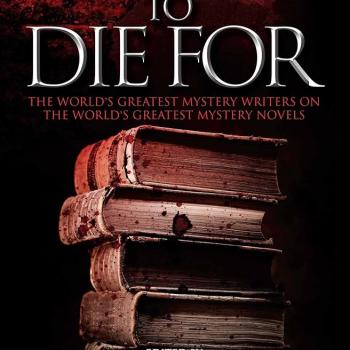
In the beginning was the Word, and the Word was with God, and the Word was … carried by electricity?
In her new book, When the Medium was the Message: The Atlantic Telegraph and the Religious Origins of Network Culture, Dr. Jenna Supp-Montgomerie discusses how evangelical Protestants became a somewhat surprising driver behind the adoption and use of telegraph’s pre-internet (but also still literally wired) network of networks.
What follows is a lightly edited Q&A with the author.
Will Mari: Tell us about the book! How did you get to this topic?
Jenna Supp-Montgomerie: Originally, this book emerged out of a very sincere moment of confusion. I started reading all of this important work in media studies that identifies the telegraph as an innovation that radically changed the United States and the world. It gave us time zones, it changed the way we speak, it altered how wars were waged, etc. I could not make sense of these grand claims in light of the fact that the telegraph is arguably one of our few truly obsolete technologies.
I thought I'd make sense of this by reading historical newspaper accounts from the time of the telegraph’s emergence. Surely that would illuminate why the telegraph matters so much now! That only dug the hole deeper. There were all of these effusive, enthusiastic, hyperbolic declarations about what the telegraph would do. I was struck by the strangeness of these national celebrations for a telegraph line as a technology [that] would finally realize God's kingdom and unify world. Such claims appeared everywhere—in missionary newsletters, the papers of utopian communities, public speeches by important politicians, early telegrams, applications for governmental funding and patents, and even projected onto the sides of buildings. I thought [about how] we don't really do that for infrastructure anymore. We don't celebrate a new internet cable or a highway… It seemed very—I hate to say this now—but it struck me as very “quaint.”
But then I realized we actually do quite a bit of that in our celebrations of the internet, especially in the aughts (2000s), and its capacity to democratize speech and create global connections. So, it seemed a rich area to investigate!
Mari: What do you think people today tend to get wrong about the motivations and mission of religious groups in the nineteenth century, in the context of global networks?
Supp-Montgomerie: There are two ghosts I wrestled with as I wrote. One was the idea that religion is primarily about beliefs or ethics or identity; all of these immaterial, abstract framing elements. This is especially true when people think about missionaries, where you have people who were going into significant situations of danger, leaving behind all that they knew. We tend to tell those stories very much in terms of their commitments, their guiding beliefs, their ethics, their identity. And what I wanted to do was talk about religion in its most material forms, because I think that's a fundamental place where technology and religion matter to each other. When one reads missionary accounts of their work in the nineteenth century, they write about conversions, but they also write a lot about things. Cyrus Hamlin, an important missionary in the Ottoman Empire, has whole chapters about the telegraph, [and] paragraphs on washing machines. Henry Harris Jessup, a missionary in Syria, proudly chronicled the work of missionaries to introduce kerosene, parlor organs, wire nails, dentistry, and the potato! I wanted to write against the idea that technology is the domain of ‘stuff’ [whereas] religion is the domain of ‘belief.'
The other ghost I was wrestling with was the regularity with which we presume that missionaries used technology primarily for its ability to disseminate messages. We think that missionaries would think about media as a vehicle to get their message out faster to more people further away. When I read the letters that missionaries wrote home, or looked at the publications of missionary societies, there is just a whole lot of concern with…“things” themselves. These were often conversations that had no mention of belief, no mention of conversion experiences, but spent a lot of time describing technology—in and of itself—as evidence of Christianity’s righteousness. Hamlin described the telegraph as awing the Ottoman sultan into “reverential silence” long before a telegraph line was built, and messages could actually be sent from one place to another.
There was a deeply held conviction that if you simply show non-Christians a spectacular technology, they will convert, right there, because of a telegraph, because of a battery.
That was something I really wanted to draw attention to—these material aspects of religion. Protestant evangelicals are so often read through their own commitments to immateriality, but they so often live through a very different set of practices that emphasize and organize themselves around matter.
Technology gets read as scientific and secular. It's understood to be de facto politically neutral. Of course, it wasn't. Not simply by virtue of its involvement in white missionary efforts, but also because of the other ways that technology was tied to American nationalism on the cusp of the Civil War and was an important part of dreams of national unity during a time of incredible violence and fracture.
Mari: In this work, it’s hard not to approach history with that feeling of inevitability—how things turned out is how they would always have turned out. How did you attempt to disentangle presumptions about the past?
Supp-Montgomerie: I looked at all of the “telegraphs” that didn't make it and are now obsolete. The telegraphs that faded into obscurity show us what networks could have become but didn't. In the mid-nineteenth century, a tremendous amount of work went into creating this idea that networks are connected, that network cables create speedy, friction-free communication, that networks are ubiquitous, all of the things that we still talk about when we talk about networks.
Today, we call the electromagnetic telegraph, the telegraph. But, at the time when it was being invented, it was called the electromagnetic Telegraph. The telegraph referred to the optical telegraph, a system of towers with movable arms so that a message could be sent by visual code from tower operator to tower operator. In Richard John’s wonderful book, Network Nation, he notes that the 40 or so U.S. newspapers that had “telegraph” in their mastheads in the early part of the nineteenth century were all referring to the optical telegraph.
Or had the spiritual telegraph—the practice of speaking to the dead through coded knocks—become the telegraph, networks would have become a mode of mystical experience, instead of a technological, earthly, scientific enterprise. The grapevine telegraph, one way that African Americans communicated about surviving and overthrowing slavery, would have made networks governed by modes of secrecy and membership rather than making networks public and infrastructural. So, looking at the other telegraphs that could have been really helped highlight and illuminate all of the work that went into making the electromagnetic telegraph into the telegraph.
Mari: What was a could-have-been that really struck you along the way, in your research and writing?
Supp-Montgomerie: I really did like thinking about the spiritual telegraph because…we still flirt with the idea that technology can reveal signals from unknown sources. That's always an object of fascination for…U.S. Americans. Spiritualism was a wildly popular transatlantic religious movement that involved all sorts of people and empowered all sorts of people including women, children, and gender-bending mediums.
What would it do to our understanding of networks if our primary communication partners were dead? There's just something so striking about how much that upends the technicity of networks and our illusions of control over our technology; the idea that technology is a tool that’s subject to our control.
It is kind of an interesting thing to toy with the idea that the telegraph would create worldwide unity. What if [it] had? What if it ended war? That would have been nice.
Or maybe not. When you look at the Internet or the telegraph, it's very clear that the global unity that these people were imagining was actually not one I would want to be part of. It was power-laden, violent, assimilative, and forgetful of huge swaths of the global population in all sorts of ways. It’s an incisive mirror to hold up to our present political moment. To remember that the dream of unity, this promise that’s now very politically charged again in the United States, bears costs that we may not want to pay.
Mari: In what ways are the hopes and dreams people associate with technology today similar to what our nineteenth century forebears experienced? Or how are they different?
Supp-Montgomerie: I can't help but think about some of our responses to the coronavirus; in particular, the difficulty we have all had in getting to the reality that, in this case, some forms of disconnection are the most caring thing that we can do for each other.
Our habitual equation of care with connection, of successful human relationship with connection, is still so dominant for us that, even in a case when we are risking each other's lives, it took a long time for many of us to think of social distance and masks as care. In some ways we're battling the same beasts then and now.
Networks, connection, and “the good” were joined in the nineteenth century and are still very much a part of how we understand global and local sociality now.
It’s very difficult for us to really wrap our heads around the way that disconnection can be a formative and important part of our relationships and can, perhaps, be part of how we might build a world that a great expansive “we” can live in well.
Will Mari is an assistant professor of media law and media history at the Manship School of Mass Communication at Louisiana State University. He studies analog-to-digital transitions, the history of media technologies, the intersection of race, gender faith and religion, and has a forthcoming book with the University of Missouri Press, The American Newsroom A History, 1920-1960. He loves spending time with his brilliant wife, Dr. Ruth Moon Mari, with friends, visiting mountains, and dancing. He ultimately tries to be a faith-y person, but fails of course, and that’s OK, paraphrasing the British journalist, GK Chesterton: “If a thing is worth doing, it is worth doing badly.”
4/28/2021 2:31:23 PM




